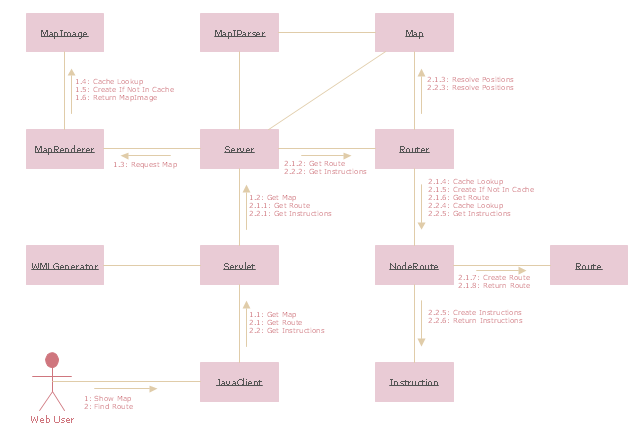"The client–server model of computing is a distributed application structure that partitions tasks or workloads between the providers of a resource or service, called servers, and service requesters, called clients. Often clients and servers communicate over a computer network on separate hardware, but both client and server may reside in the same system. A server host runs one or more server programs which share their resources with clients. A client does not share any of its resources, but requests a server's content or service function. Clients therefore initiate communication sessions with servers which await incoming requests.
Examples of computer applications that use the client–server model are Email, network printing, and the World Wide Web." [Client–server model. Wikipedia]
The UML communication diagram example "Client server access" was created using the ConceptDraw PRO diagramming and vector drawing software extended with the Rapid UML solution from the Software Development area of ConceptDraw Solution Park.
Examples of computer applications that use the client–server model are Email, network printing, and the World Wide Web." [Client–server model. Wikipedia]
The UML communication diagram example "Client server access" was created using the ConceptDraw PRO diagramming and vector drawing software extended with the Rapid UML solution from the Software Development area of ConceptDraw Solution Park.
- UML communication diagram - Client server access
- UML communication diagram - Client server access | UML ...
- How To Draw A Dfd Diagram For Client Server Communication
- UML communication diagram - Client server access | Star Network ...
- UML communication diagram - Client server access
- UML communication diagram - Client server access | UML ...
- PM Personal Time Management | UML communication diagram ...
- Idea Communication | Quality | Idea Outline | Communicate
- How To Draw Collaboration Diagram For Client Server
